7.6 /10 1 Votes
7/10 TV Country of origin Australia Running time 50 minutes First episode date 20 October 1964 Writers Cul Cullen | 8/10 IMDb Created by Crawford Production No. of episodes 510 Final episode date 18 January 1977 Number of episodes 510 | |||||||||||||||||||||||||||||||||
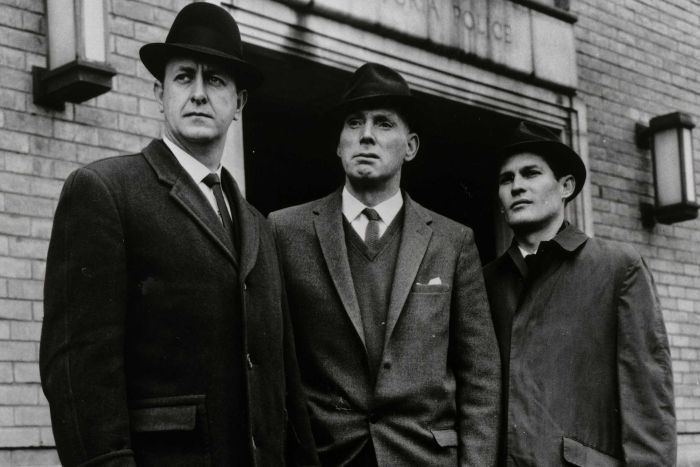 | ||||||||||||||||||||||||||||||||||
Starring John FeganTerry McDermottLex MitchellLeonard TealeLes DaymanGeorge MallabyLionel LongAlwyn KurtsNorman YemmMike PrestonGary DayCharles "Bud" TingwellJohn StantonDon BarkerDennis Grosvenor Cast Similar Division 4, Matlock Police, Cop Shop, The Sullivans, Bluey | ||||||||||||||||||||||||||||||||||
Homicide (1964-1977) was an Australian television police procedural drama series made by production firm Crawford Productions for the Seven Network. It was the television successor to Crawfords' radio series D24.
Contents
- Series synopsis
- Cast Characters
- Broadcast history
- Technical specifications
- Scripts
- Awards
- Feature film
- Records
- Significance
- Guest artists
- Legacy
- DVD release
- References
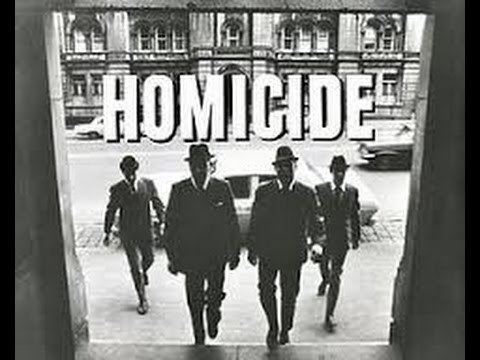
Series synopsis
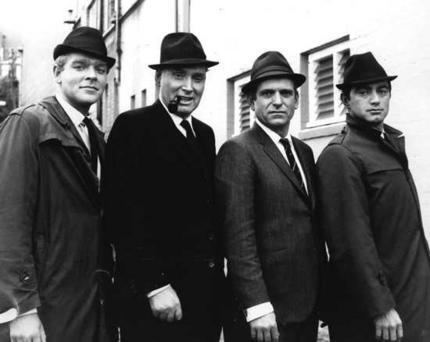
The series dealt with the homicide squad of the Victorian Police force and the various crimes and cases the detectives are called upon to investigate. Many episodes were based directly on real cases, although the characters (including the detectives) were fictional. 510 episodes were produced, and aired from October 1964 to January 1977. It remains as the longest-running Australian drama series.
Cast & Characters
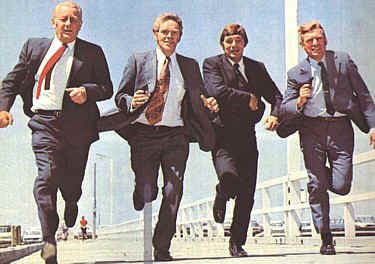
Characters' ranks (except for Detective Inspector) changed in accordance with real-life changes in the Victoria Police Force. For example, Detective Sergeant Mackay becomes Detective Senior Sergeant to reflect his role as the squad's number-two when this rank was introduced. Barnes becomes a Senior Detective after the rank of Detective was abolished. The "Consummate Homicide cast" refers to the four characters that are the best known: Det. Snr. Sgt. David "Mac" MacKay (Leonard Teale), Det. Sgt. Peter Barnes (George Mallaby), Inspector Colin Fox (Alwyn Kurts) and Sen. Det. Jim Patterson (Norman Yemm).
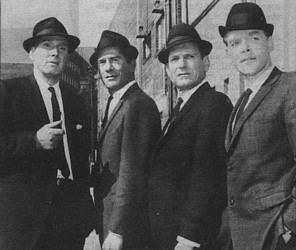
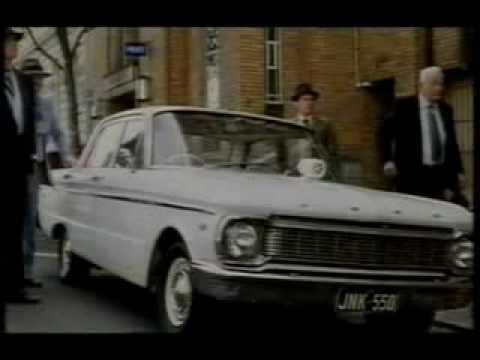
Broadcast history
The first episode aired at 7:30 p.m Tuesday 20 October 1964. The debut episode ("The Stunt") was not the first to be produced, with the pilot ("One Man Crime Wave") airing as episode 24A just prior to the departure of Lex Mitchell.
Regular daytime repeat screenings began in the early 1970s running until the early 1980s, as strip programming. Additionally, seven episodes were screened as specials, or part of specials:
In 2004 the episodes "Flashpoint" (ep. 56) and "Stopover" (ep. 504) were screened cinematically by Melbourne Cinematheque.
In August 2010 WIN Television, as part of their late night "Crawford's Classic Drama" series, began sequential repeats from episode 1, but ceased in March 2011 at episode 33 (the pilot "One Man Crime Wave" was not included).
In the 1960s, the series was picked up, on a regional basis, by some of the ITV companies in the UK. Not all regions screened the show, which was scheduled in a late-night slot (usually 10:30pm or later), but among those that did were Westward TV, Yorkshire TV, Channel TV, Border TV and Southern Television.
Technical specifications
Early episodes were in black and white with the bulk of material recorded on videotape in the studios of HSV7 using a Multicamera setup. Each episode also featured about ten minutes of location footage shot on 16 mm film. Total time per episode was 47 minutes.
With occasional exceptions, the filmed segments did not have synchronised sound and so featured little dialogue, concentrating more on dramatic shots of cars pulling in, gun battles, and fist fights.
Dialogue for the film scenes was done "post sync". This means that the dialogue was recorded on location but, due to the often low quality of audio recorded in this manner, the actor was required to record the dialogue in a sound-proof studio in the standard filmmaking process known as Additional Dialogue Recording. Location recordings were used infrequently, and usually limited to brief dialogue snatches in enclosed spaces, such as the interior of a car. Sound effects would be also dubbed onto the location-shot footage. Both pre-recorded sound effects recordings and the work of Crawford's foley artist would be used.
Episode 56, "Flashpoint", which first aired on 19 April 1966, was shot entirely on location on film, and most of the dialogue of this episode was post-synched. Over the years the ratio of film to videotape was increased, and synchronised sound became the norm. When the series switched from black and white to colour in 1973, it necessitated shooting entirely on film, as the HSV7 studios were yet to be converted to colour video production.
If a script was amended, a Crawford Productions staff member who lived near the actor concerned would be required to deliver the new script to their house. Quite often this new dialogue had to be memorised for filming the next day.
The workload for the regular actors, especially for location work, was notoriously heavy. In 1967 the regular squad was increased from three to four to better share the load, which remained the standard team to the end. In 1972, when it was decided to transfer production entirely to film, the result was a massive increase in overtime demanded by the series. Leonard Teale and Alwyn Kurts promptly quit, and George Mallaby only re-signed with a 13-week "escape clause", which he eventually invoked. All cited the worsening workload, which was best expressed by Leonard Teale as he announced his departure from the show:
"There has never been a dispute over basic pay rates; the dispute has always involved the massive overtime that Crawfords want me to work in the new year. In the end it became a simple choice between my marriage and Homicide. I chose my marriage."Scripts
Homicide scripts explored a number of major social issues, such as:
Many of these episodes were introduced by John Fegan to highlight their significance (and, presumably, to indicate they may not be suitable for younger viewers).
Scripts were frequently based on real murder cases, including:
Awards
Homicide won multiple awards for its scripts, including three AWGIEs, two Logies, one Penguin and one Sammy Award:
AWGIEs:
1970: John Dingwall - Best Script for a TV Drama Series for episode 208, "Everyone Knows Charlie"1975: Peter Schreck - episode 434, "The Graduation Of Tony Walker"1976: Keith Thompson - Best Script for Telemovie for episode 504, "Stopover"Logies:
1973: Fred 'Cul' Cullen - Best Script for episode 385, "The Friendly Fellow"1974: Fred 'Cul' Cullen - Best Script for episode 414, "Twelve Bar Blues"Penguin:
1975: Australian Film Commission Second Prize for episode 434, "The Graduation Of Tony Walker"Sammy:
1976: Keith Thompson - Best Writer (TV Play) for episode 504, "Stopover"Feature film
Late in the show's run - between episodes 470 and 480 - a feature-length episode was filmed. This film was entitled Stopover, with the title Homicide not used at all, and was shot entirely on film on new sets and on location at Melbourne Airport. The story involved an international rock band that was held at the airport following the fatal overdose of a band member. Guest stars included Jon English as the band's lead singer, and Tony Bonner as the band member who overdosed. The film never received a cinema release but was shown on television as a special in 1976. It is officially listed as episode 504, with episodes 502 and 503 also being feature-length.
Lawson, White, Deegan and Redford are the detectives in the film.
Records
Significance
Homicide was the first major dramatic television series to be produced in Australia, the domestic television market having been previously dominated by American and British imports. In 1964, any Australian-made product tended to be quiz shows, children's series, music/variety series and one-off plays, with local drama production sporadic at best, with only a handful of typically short-lived series on commercial television such as Autumn Affair, Emergency and The Story of Peter Grey, along with several mini-series on ABC such as Stormy Petrel. Foreign imports were preferred because they were both cheaper and (especially for US series) more plentiful than local productions. Homicide proved that there was a market for home-grown dramatic programming and was highly successful from the start - its initial ratings were in the 30s, and regularly rated in the high 40s and even low 50s (modern cop show ratings tend to be in the 20s at best). In addition, the series was produced at a tenth of the cost of an overseas program and easily outrated them.
Guest artists
The series also proved itself to be a virtual training ground for Australian television and film production. During its 11-year run, almost everyone in the industry - actors, directors, scriptwriters, producers, camera crew, etc. - worked on the series at some point in their careers, and guest roles were filled by a veritable Who's Who of the Australian entertainment - both established and newcomers.
For these reasons, as well as for inspiring a series of popular cop dramas that followed, it remains one of the most important programmes in the history of Australian television.
Legacy
In 2007, Homicide was chosen for an Australia Post stamp to celebrate 50 years of television in Australia. In 1994, a special tribute to the series aired titled Homicide: 30 Years On, hosted by Blue Heelers stars John Wood and Lisa McCune, which included interviews with surviving cast members and guest stars (both John Fegan and Leonard Teale had died by that time).
DVD release
Homicide has been released on DVD in a series of box sets since December 2012. Each box set contains 26 episodes on 7 discs. As of January 2017, seventeen sets & a bonus disc of The Homicide Story have been released, available from Crawford's online store. The full set should comprise 20 boxsets when complete.
